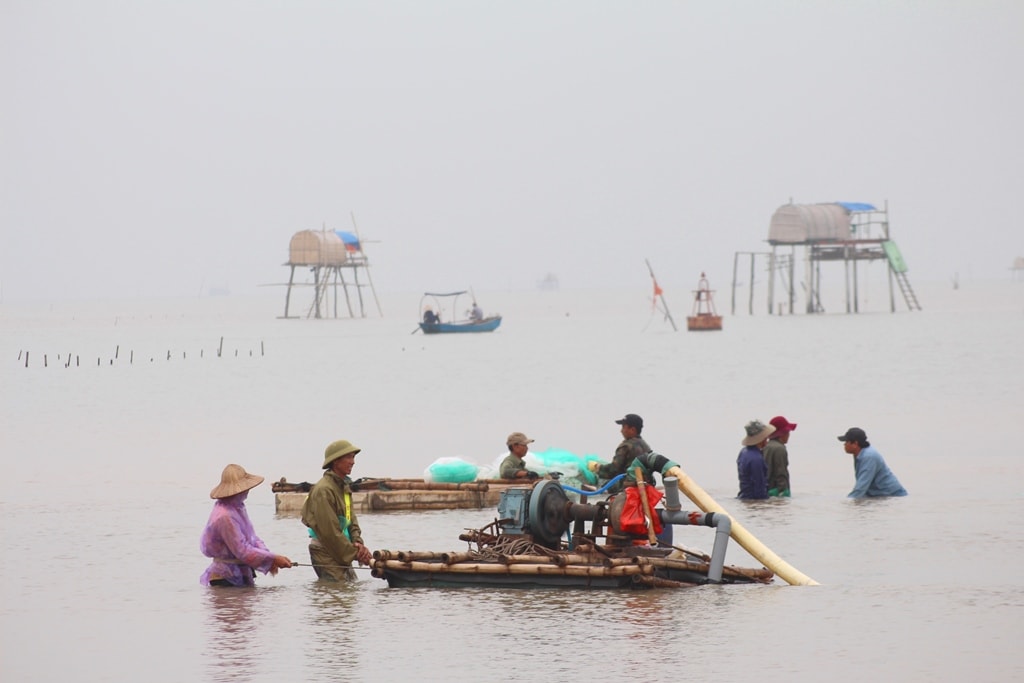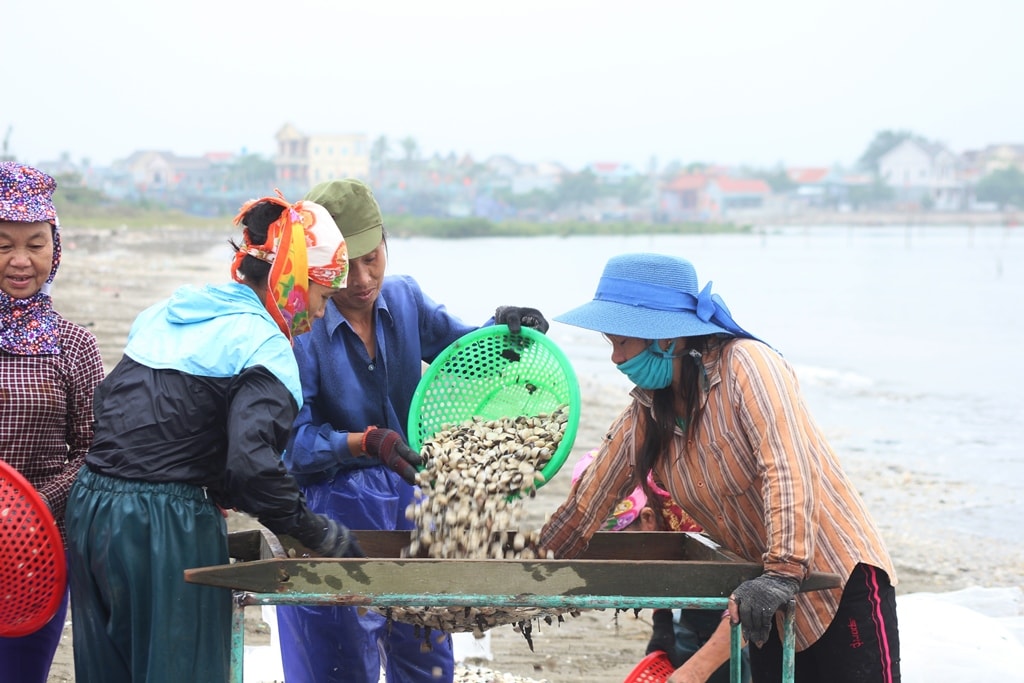Zoning of tidal flats for aquaculture
(Baonghean.vn) - After the project of zoning tidal flats for aquaculture in Quynh Luu officially comes into operation, the potential for aquaculture development in general and clam farming in particular will be exploited and used well in the direction of improving product quality and value.
Quynh Luu has more than 19.5 km of coastline, 2 main estuaries flowing into the sea and connecting with the Mai Giang river system and Nha Le canal, creating a large tidal area for clam farming development.
With an area of 140 hectares, the annual clam harvest output reaches 2,800 - 3,000 tons; revenue reaches over 50 billion VND.
 |
Project planning area for tidal flat aquaculture zoning in Quynh Luu. Photo: Viet Hung |
However, clam farming areas in coastal tidal flats often face changes in the flow of the Thai River, conflicts between economic sectors, and inappropriate production organization, leading to difficulties and limitations in tracing the origin, certifying, and confirming products.
Based on that reality, Quynh Luu district has established the project "Zoning the use of tidal flats for aquaculture until 2020" to effectively exploit advantages and potentials to develop aquaculture in an effective and sustainable direction.
 |
Once operational, the project will effectively exploit the district's potential advantages. Photo: Viet Hung |
This project will be invested by the District People's Committee and consulted by the Institute of Economics and Planning, Ministry of Agriculture and Rural Development; the cost of implementing this project is nearly 500 million VND. The location of the zoning of the tidal flat area in the communes of Quynh Tho, Son Hai, Quynh Thuan and Quynh Long, scale 1/2,000, includes the clam seed production area, the commercial clam farming area, the free exploitation area and the traffic safety corridor for ships.
For the project to be implemented well, the entire clam farming area in the tidal flats will not be stocked but must be handed over to the District People's Committee for management. When the project is approved by the superior, the plots will be divided into plots for households to manage and use according to the right purpose.
